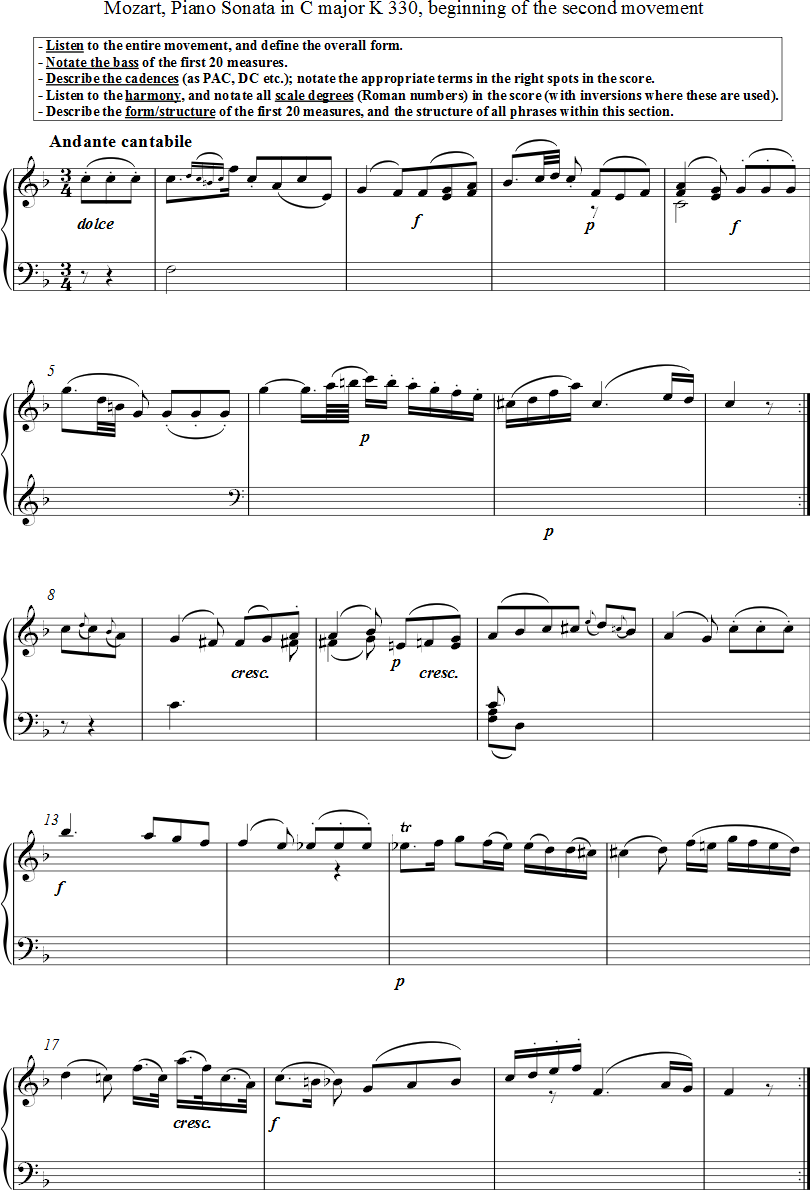Below is a partial score of a Mozart Piano Sonata, some exercises for
harmonic hearing, and a two-part and a rhythmical dictation.
You
can find all solutions here. |
|
|
|
|
|
When you want to
use the materials below (and elsewhere on this website) you must install
the browser plugin SCORCH(by
Sibelius Music). The plugin allows you
-
to see the scores
-
to listen to them (midi)
-
change the tempo, and transpose them to another key (works
fine normally, only sometimes it goes entirely wrong)
|
Om dit materiaal te kunnen gebruiken moet
op je computer het programmaatje 'scorch' (van Sibelius) zijn ge?nstalleerd.
Je kunt de oefeningen dan
-
bekijken
-
beluisteren (als midi, dus mooi is het niet echt..)
-
in een ander tempo afspelen en transponeren naar een andere
toonsoort (gaat meestal goed, en soms goed fout..)
|
|
|
Important to know: after you finish playing an example in Scorch,
you have to use the stop button
before any other example on the same page can be played (else Scorch
simply does not start again). |
| 1. |
-
label the cadences first (you can distinguish at least four cadences)
-
describe the structure of the example (period? sentence? which kind?)
-
notate the bass
-
label all chords
|
|
|
|
|
| 2. |
-
label the cadences first
-
notate the bass
-
label all chords
-
label harmonic patterns that may occur
|
|
|
|
|
| 3. |
-
label the cadences first
-
notate the bass
-
label all chords
-
label harmonic patterns that may occur
|
|
|
|
|
Two-part dication
; rhythmic dictation
|
-
Two-part dictation: notate both voices, and describe the relation between
the two voices
-
Rhythmic dictation
|
|
|
|
|
| . |
Mozart's Piano Sonata in C major K 330, beginning
of the second movement
-
Listen to the entire movement, and define the overall form.
-
Notate the bass of the first 20 measures.
-
Describe the cadences (as PAC, DC etc.); notate the appropriate
terms in the right spots in the score.
-
Listen to the harmony, and notte all scale degrees (Roman
numbers) in the score (with inversions where these are used).
-
Describe the form/structure of the first 20 measures, and the structure
of all phrases within this section.
|
|
recordings, for instance:
Youtube:
Mitsuko
Uchida
Clara
Haskil (6'19'')
Vladimir
Horowitz (6'20'')
Daniel
Barenboim (6'10'')
|
|
|
|
|
 |
|
|
|

